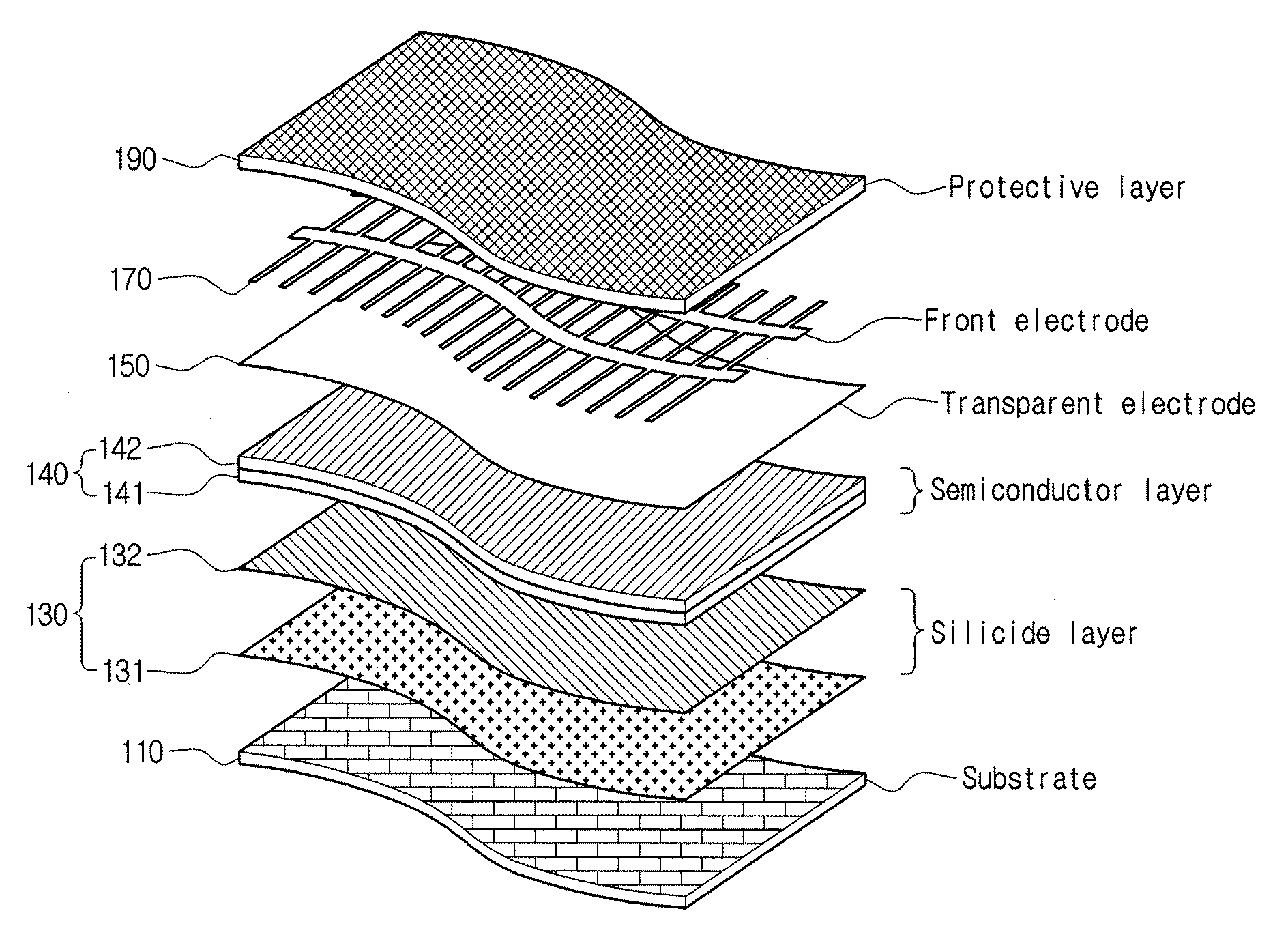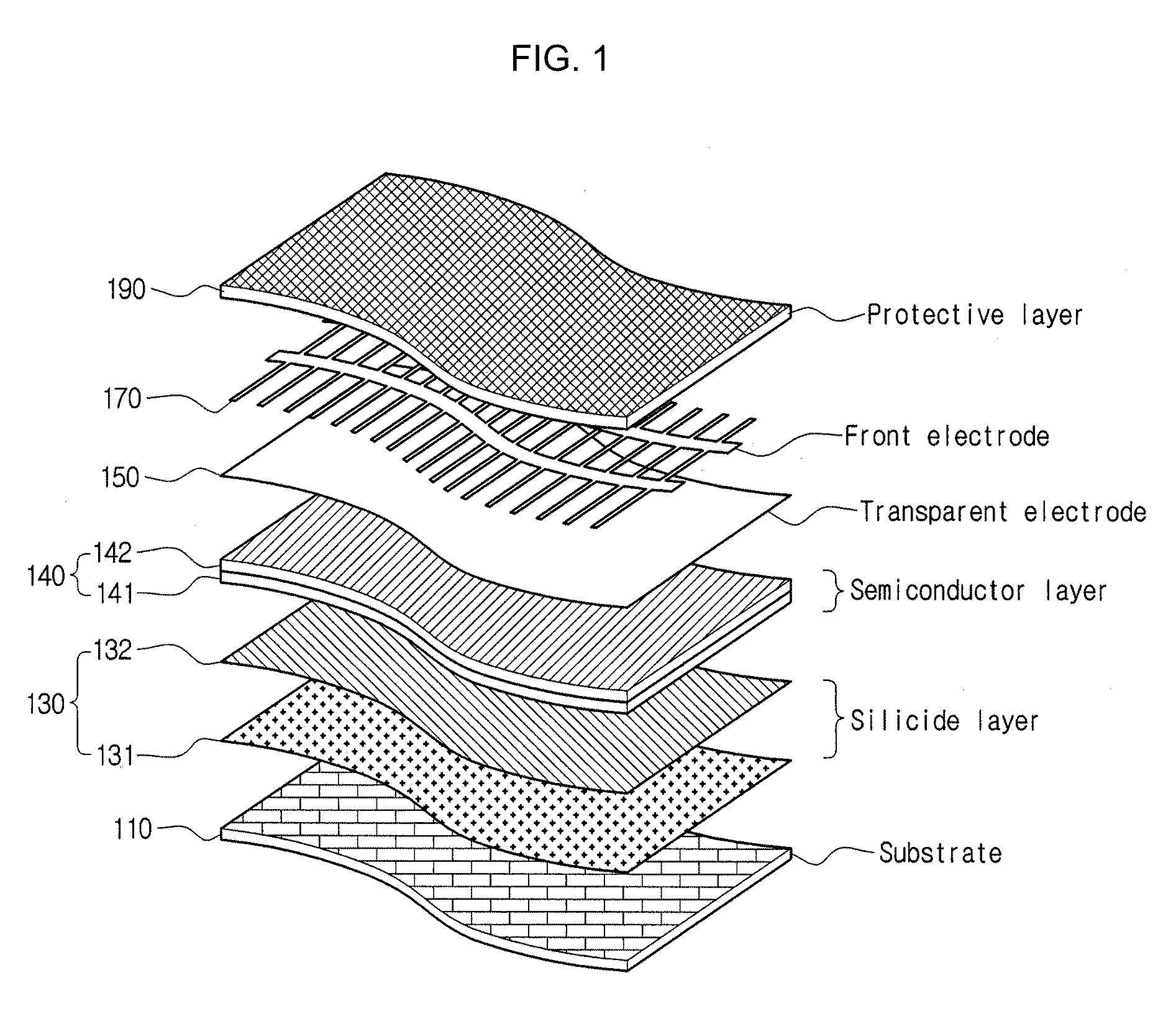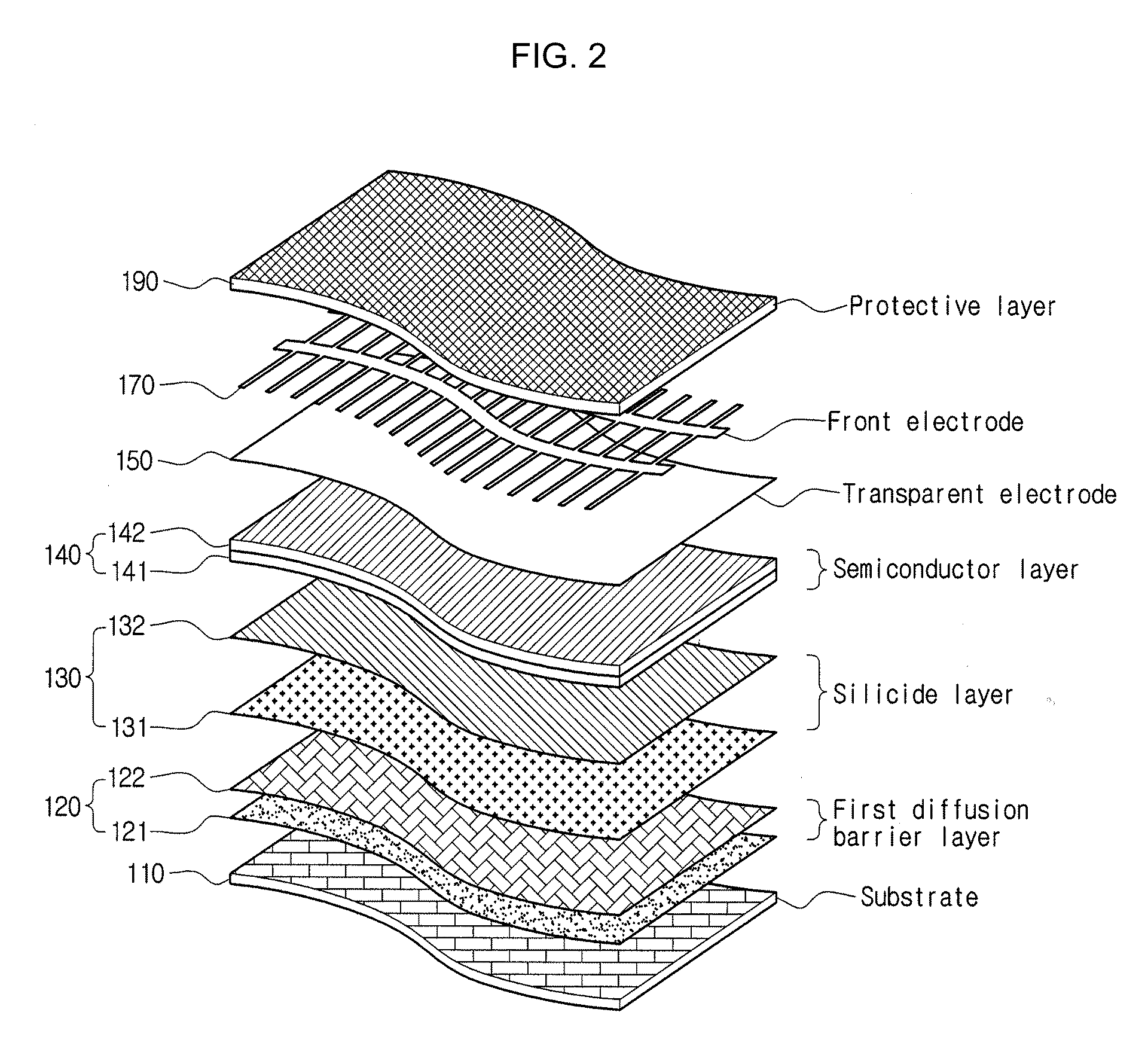Solar cell and fabricating method for the same
a technology of solar cells and manufacturing methods, applied in the field of solar cells, can solve the problems of insufficient use of aluminum as flexible substrates, high price of titanium, silica, alumina, etc., and achieve the effect of reducing manufacturing costs and simplifying the manufacturing process
- Summary
- Abstract
- Description
- Claims
- Application Information
AI Technical Summary
Benefits of technology
Problems solved by technology
Method used
Image
Examples
Embodiment Construction
[0035]Hereinafter, reference will be made in detail to various example embodiments of a solar cell and a method for fabricating the same, which are illustrated in the accompanying drawings and described below. While the invention will be described in conjunction with example embodiments, it will be understood that the present description is not intended to limit the invention to those example embodiments. On the contrary, the invention is intended to cover not only the example embodiments, but also various alternatives, modifications, equivalents and other embodiments, which may be included within the spirit and scope of the invention as defined in the appended claims.
[0036]FIG. 1 is an exploded perspective view of a solar cell according to an example embodiment, and FIG. 2 through FIG. 6 are exploded perspective views of solar cells, which further comprise a first diffusion barrier layer, a highly concentrated p-type semiconductor layer (p+), a second diffusion barrier layer, an IR...
PUM
 Login to View More
Login to View More Abstract
Description
Claims
Application Information
 Login to View More
Login to View More - R&D
- Intellectual Property
- Life Sciences
- Materials
- Tech Scout
- Unparalleled Data Quality
- Higher Quality Content
- 60% Fewer Hallucinations
Browse by: Latest US Patents, China's latest patents, Technical Efficacy Thesaurus, Application Domain, Technology Topic, Popular Technical Reports.
© 2025 PatSnap. All rights reserved.Legal|Privacy policy|Modern Slavery Act Transparency Statement|Sitemap|About US| Contact US: help@patsnap.com



